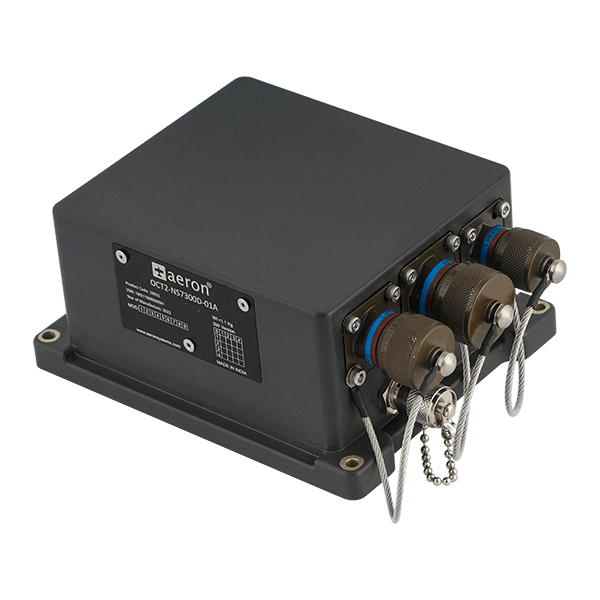Aeron's Octantis 2 INS is a rugged MEMS based navigation system that provides reliable position and navigation information in intermittent GNSS conditions. Octantis 2 is a field proven product which is in service for the last 10 years and is supported for long program life. Octantis 2 INS-GNSS system delivers centimetre level RTK positioning with integrated multi-constellation and multi-frequency (L1, L2 and L5) GNSS chipset.
Octantis 2 NS7300D-01A is designed for land and unmanned airborne applications. It has undergone a range of qualification tests covering an array of use cases and associated environment factors. Octantis 2 INS-GPS is also part of our land navigation suite offering delivering best in class GPS denied performance with odometer aiding over CAN or Pulse Input. It features RS232, RS422, Ethernet and CAN interfaces, all isolated for interfacing with vehicle mounted displays, controllers, computers, and autopilot systems.


Field proven MIL Qualified INS-GNSS System suitable for very demanding and harsh requirements part of various military programs.
Suitable for land navigation in GNSS compromised scenarios assuring low position drift (1% DT CEP) even in long term outages of several hours.
10 years+ product legacy having been part of key defense programs since 2013. Supported for a long program life of 15+ years.
Accepts ground speed aiding over CAN (J1939 protocol) and over pulse odometer with configurable scale factor.
Complete and Continuous Built in Test (CBIT) to monitor and inform user about the system health parameters that include sensor health.
Octantis has Aeron’s own IMU system incorporating best in class MEMS sensors offering exceptional GPS denied performance in long term outages.
Protecting the device electronics from electromagnetic interferences and transients on power and data lines.
Wide array of isolated interfaces and protocols are available on Octantis including Binary and NMEA over Ethernet, CAN, Serial RS422 and RS232.
Octantis has Aeron’s own IMU system incorporating best in class MEMS sensors offering exceptional GPS denied performance in long term outages.
Octantis 2 INS supports GPS, GALILEO, GLONASS and NAVIC constellations on L1, L2 and L5 frequencies.
Octantis 2 has been qualified for land application as per MIL-STD-810G, MIL-STD-461E and MIL-STD-1275E standards and select tests for airborne applications.